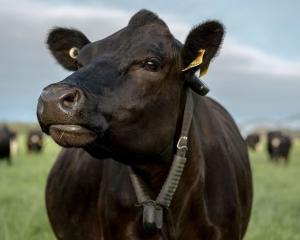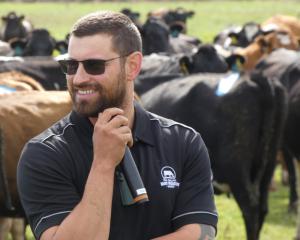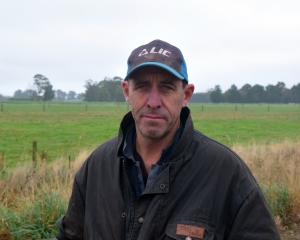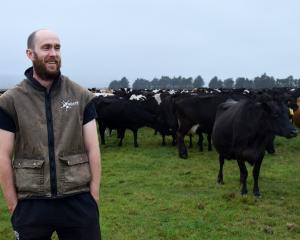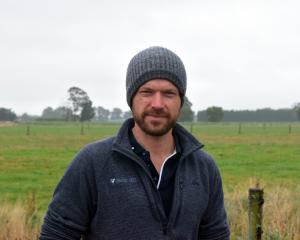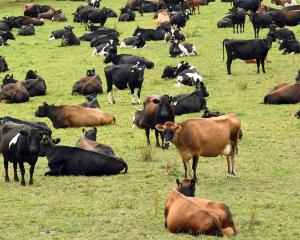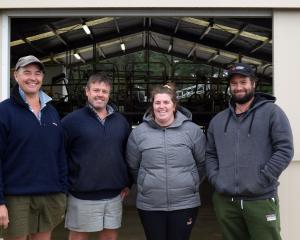DairyNZ is to host two workshops for dairy farmers and one for rural professionals this month, to prepare them for the Otago Regional Council's Water Plan, which will released in 2020.
Catchment engagement leader for Otago, Hanna Stalker, said there were ''Farming With Limits Otago - Are you ready for 2020?'' workshops planned for Balclutha on February 27 and Papakaio on February 26, with another planned for rural professionals in Mosgiel on February 25.
Mrs Stalker said it was important dairy farmers
started to think about the plan and what it meant for their farming operations.
''We want to help farmers understand the changes that are coming and to prepare them for what is ahead
''The workshops will be around nitrogen loss on farms and the nitrogen limits that will come into play [as part of the plan] in April 2020,'' Mrs Stalker said.
She said the interactive workshops would show farmers how to use Overseer modelling to calculate the level of nitrogen loss on their farms.
Presenters will use data from several case study farms in the region.
In addition, Overseer will model what happens when mitigation measures are put in place.
''The workshop in Mosgiel is for rural professionals and contains a bit more research.''
Later in the year she intends to hold field days on the case study dairy farms in the region, to look at Farm Environment Plans and how to develop good management practices.
''We really encourage dairy farmers to register,'' she said.
To register contact hanna.stalker@dairynz.co.nz
OTAGO REGIONAL COUNCIL (ORC) WATER PLAN
April 2020 is now only 15 months away. That’s when the Otago Regional Council (ORC) water plan’s remaining deadlines start to bite.
The plan’s purpose is the sustainable management of Otago’s freshwater resources — lakes, rivers, groundwater and wetlands. The plan sets out discharge thresholds for nitrogen, phosphorous and E. coli that can come off a property before entering a waterway.
Farmers are charged with deciding how to manage these discharges before the April 1, 2020 deadline.When it comes to the discharge of sediment into waterways, rules are in place now.
Essentially, sediment discharge is allowed, as long it does not create a dirty plume in the river or leave any noticeable increase in local sedimentation.If you cannot meet the thresholds in time, you can apply for a short-term resource consent while you make the changes necessary to meet the thresholds.
Develop a Farm Environment Plan:
Step one is to develop a Farm Environment Plan that documents how you plan to manage your farm’s land and natural resources. BLNZ offer Land and Environment Plan workshops and free toolkit resources to help you document your plan.
This includes a recorded assessment of your farm’s environmental risks and land management opportunities, as well as a stocktake of land, soil and water resources.
Complete a nutrient budget:
Step two is a basic nutrient budget to establish where your property is at right now. Contact a certified nutrient management adviser to carry out an independent and robust budget. Once completed, ask the adviser to explain the budget to you.
Specifically what are your risks, and what are the options for managing those risks? It is important to diary the actions you take. Join or form a catchment group:
By working with neighbours, your individual efforts will be exponentially more effective. You can set goals for your catchment, and then link your on-farm actions to catchment priorities.
Catchment groups also give farmers a positive voice in their local communities.
Copy: Beef + Lamb New Zealand
ORC WATER PLAN SEDIMENT AND DISCHARGE RULES — IN EFFECT NOW
Land disturbance sediment
When disturbing land you must put in place some measures to control sediment run-off into waterways. Having no effective sediment control measures is a prohibited activity.
Sediment run-off
Sediment can enter a waterway as a permitted activity so long as the following conditions are met. Sediment run-off from land or any drain (open or tile) leading into waterways, including irrigation races and coastal water, must not result in:
A conspicuous change in colour or visual clarity, or a plume
A noticeable increase in local sedimentation.
If you cannot meet these permitted activity conditions, you need to apply for a resource consent.
Effluent discharge, silage and compost leachate
The Plan prohibits the discharge of effluent (from any animal waste system) and silage and compost leachate to:
- Any lake, river, or regionally significant wetland, including their bed, or a drain or water race that goes to these waterways or the coast
- Saturated land
- Land if it results in ponding
- Land, if it results in an overland flow to waterways or the coast, or to a drain (open or mole and tile drain system) or water race that goes to waterways
- Any bore or soak hole
- Land within 50 metres of any lake, river, or regionally significant wetland, bore or soak hole.
Stock access to waterways
Stock can only have access to streams, rivers, lakes and regionally significant wetlands (waterways) as long as they do not damage the banks and bed of the waterway or degrade the quality of the water.
Stock must not:
- Cause slumping, pugging or erosion
- Create a visual change in the colour or clarity of the water
- Damage plants and animals in a regionally significant wetland. You must not feed out to stock on the bed of the waterway or wetland.
ORC WATER PLAN — DISCHARGE THRESHOLDS — FROM APRIL, 2020
When it comes to discharge thresholds, Otago is split into two catchment areas, based on the flow of waterways.
Area 1 is shown in blue, and its waterways are generally of a higher flow and discharge to open coastline, where nutrients are quickly dispersed.
However, if streams are slow flowing or discharge to lakes or estuaries, where nutrients are likely to accumulate, then in-stream concentrations become much more important to control.
These areas are shown in pink, Area 2. Nitrogen leaching rules apply from April 1, 2020
Catchments Per year limit
Large lake catchments 15kgN/ha
Sensitive aquifers 20kgN/ha
Rest of Otago 30kgN/ha



